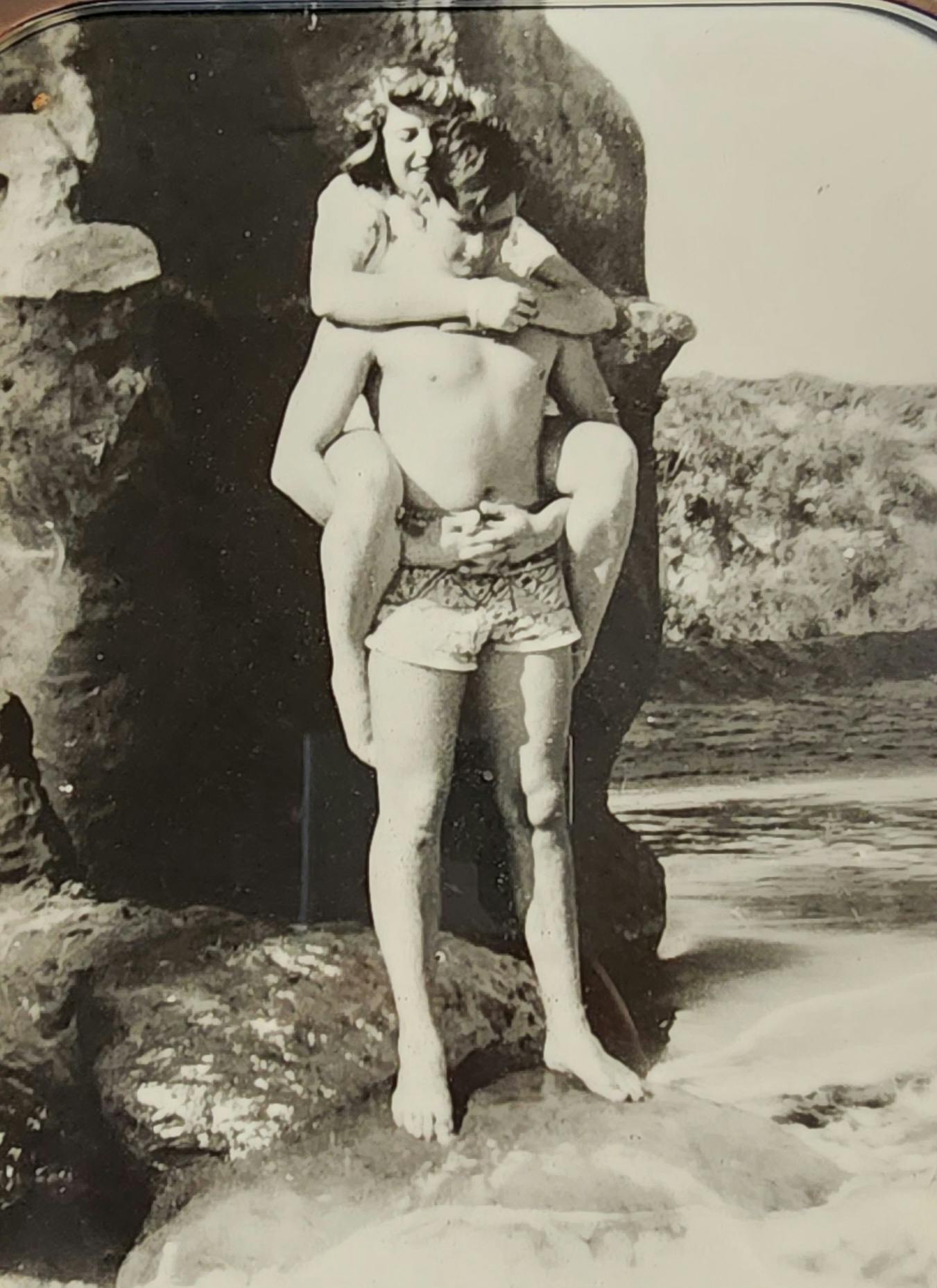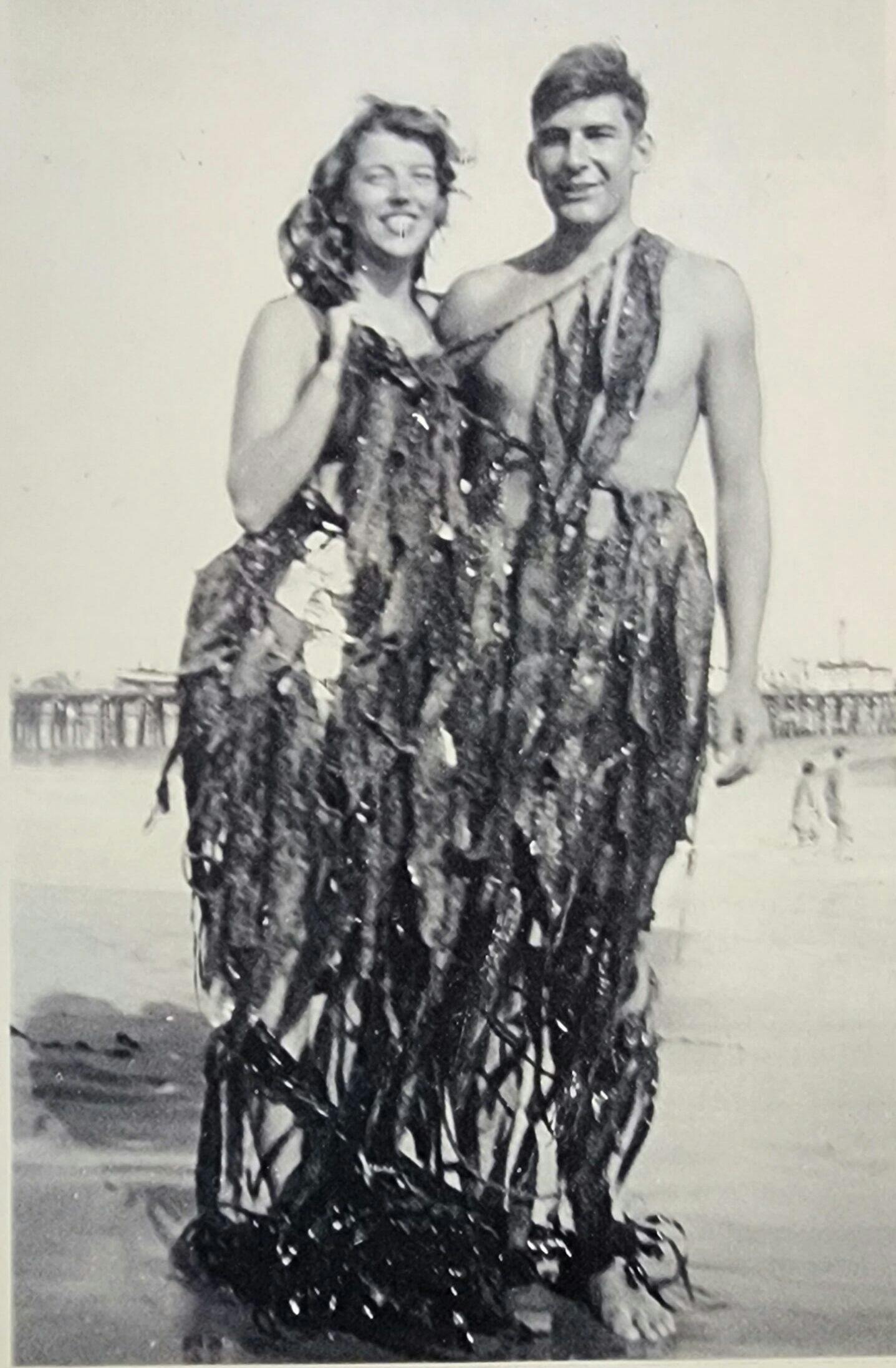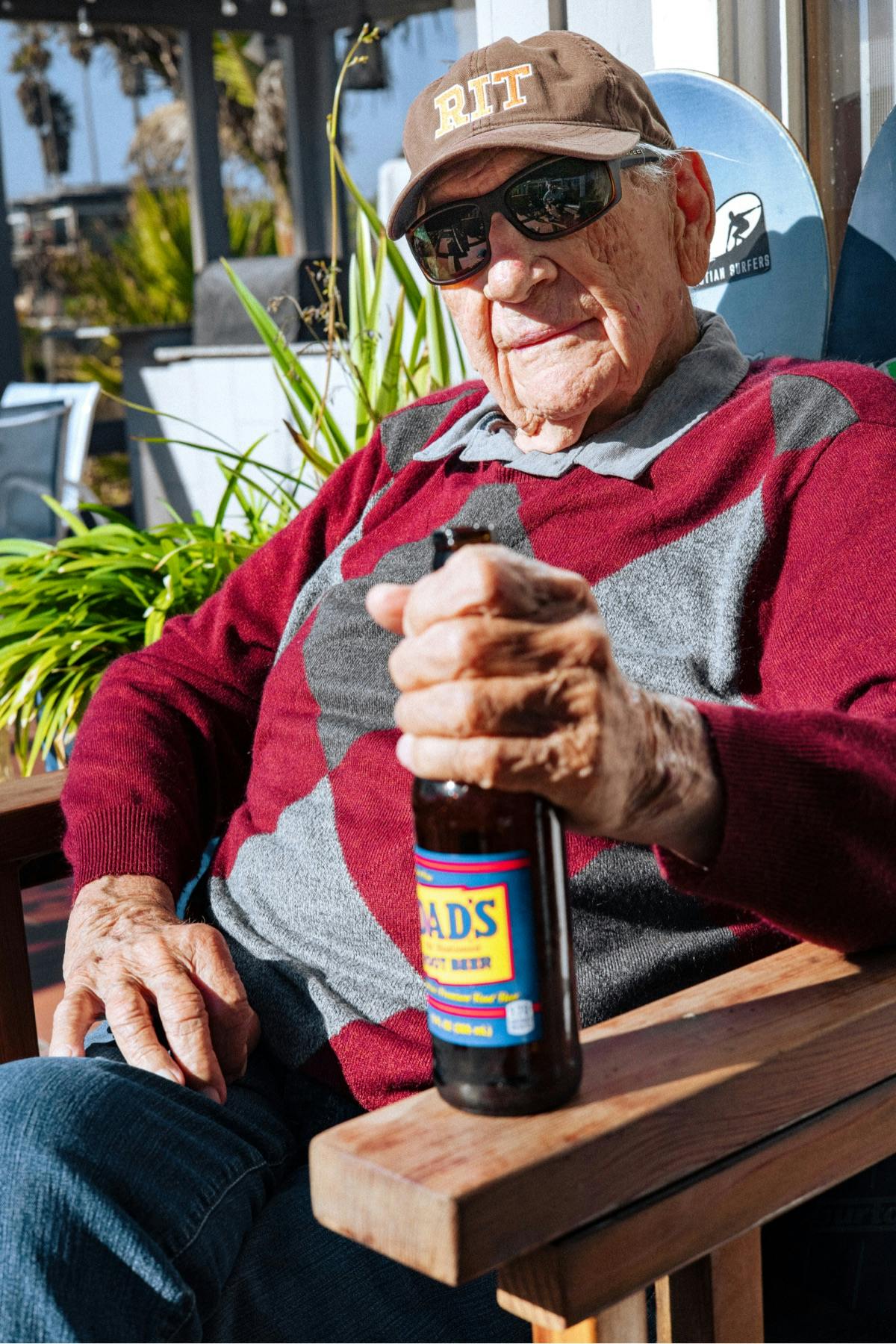Bonfires and Beach Stories
SCVM: One fateful day, while riding a colossal wave between the Wharf, disaster struck. My oversized board suddenly “pearled,” and the details remain hazy. It was akin to trying to grasp a bar of soap underwater and then letting it go, and it shoots back up—imagine that! Well, that massive board, along with the volume of water it carried, nosedived and, upon reemergence from the depths, came crashing down squarely on my noggin. The next thing I remember, I was sitting on the porch (gestures towards the porch). The guys later recounted, ‘Yeah, we warned you about hitting your head on the board down there, but you insisted you were OK, so you came in.’ Truth be told, I never really regained full consciousness (laughs).
SCVM: You were likely quite dazed and confused at the time, I suppose!
RITT: Indeed, it felt a bit like a boxer knocked out but still trying to put up a fight. Now, back to the bonfires and other beach stories. One day, as we lounged on the beach, most of these folks (points to a black and white group photo of the club members). At the bottom left corner were Evie, my wife, and me.
SCVM: Well, those are some fine-looking folks, I must say!
RITT: (Nods proudly) Oh, yeah! This is in the middle of the day. On a good day, we’d come in and lie on the sand, you know, pull the warm sand close to your body to keep it nice and warm.
SCVM: Sand puppies!
RITT: Yeah, so we kind of huddled around, tellin’ stories. The gals are there, too, just passing time. One day, we started talking about Cowell’s Beach. “I wonder what they’re going to do with this beach?” We knew that it was (Henry) Cowell’s beach. He was the one who owned it. So, I said, ‘We gotta go buy it!’ This is when the war started, so we all said, ‘Let’s buy it!’ So, these kids, we decided to elect someone to see (Henry) Cowell. I raised my hand and said, ‘Evie and I will go up and see him.’ They didn’t even have to give me gas money because gas was only a nickel or 10 cents a gallon then (laughs). Evie and I picked a date and went up there; we didn’t even call for an appointment. It shows you how smart kids are. So, we went up and parked near his office on Market Street, and there it was, “Henry Cowell Lime and Sand.” The door was open, so we went in, up the stairs, back to the second floor—just walked straight in. We just walked around and saw a lot of empty desks set up for 50 guests, at least all in a row, but nobody was there. Suddenly, a voice said, ‘Can we help you?’ We turned around and looked towards Market Street and said, ‘Yes, we’re looking for Henry Cowell.’ The voice said, ‘That’s me, come on back.’
RITT: So, we go back. How old would I’ve been? Let’s see, I was about 20 years old. Then he asked, how’s this family, and how’s that family? We were discussing his old friends. He was almost 100 at that time. So, there was a picture of him on the wall. I have the same one now. He would get behind the fire wagons, and they would pull. They’d have races with them, and he was the second from the last on the Santa Cruz team, so he was all proud of that. Finally, he says, ‘What can I do for you?’ So, I said, ‘Well, I’m part of the Santa Cruz Surf Club, and we hoped you would sell the beach. We’d like to buy it.’ If you took every club member and shook them like this (shakes fists) so the money would come out, I don’t think we’d get 10 bucks. Now, here we were, trying to buy a beach (laughs). So, he was very friendly, ‘Well,’ he said, ‘I’m sorry, but this is in a trust, and we can’t break that trust.’ So, we said, ‘Well, if you ever do, let us know!’ He said, ‘I certainly will.’ He said goodbye, turned around, and walked out. He was so lovely! Meeting older people, they’re usually grumpy, like, ‘What do you want, kid?’ But he was just very, very nice.






